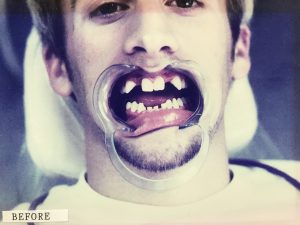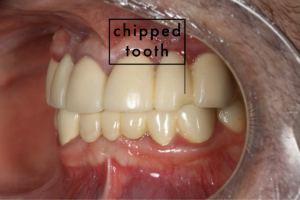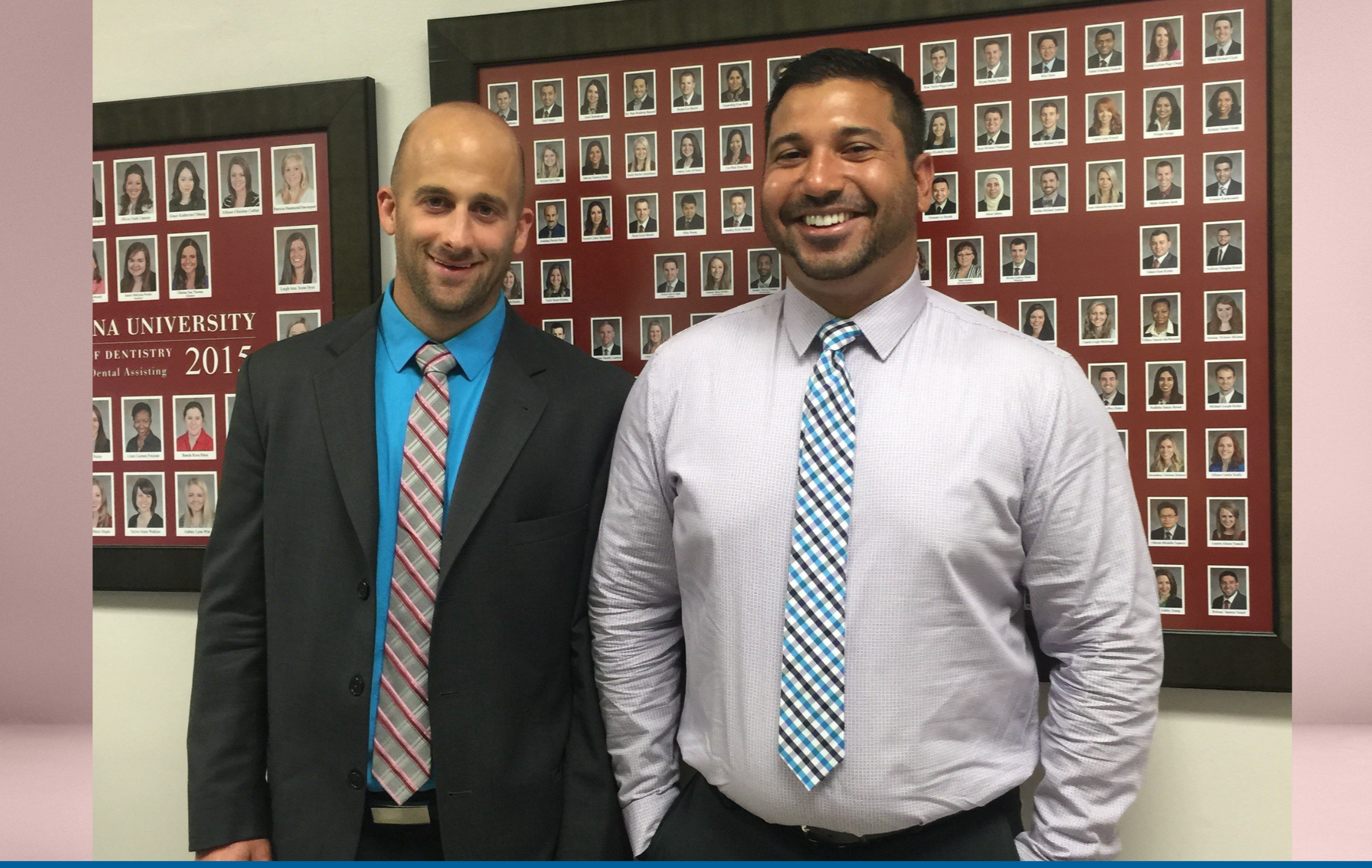This is a continuation of “Why I Became a Dentist”.
Dentist with a [im]perfect Smile
With thirteen missing teeth and a mouthful of dental bridges, Dr. Hale considers himself just as normal as anyone else. He was born with a congenital birth defect called Oligodontia which causes him to have multiple missing teeth. Despite this oral defect and lots of dental visits, he always had a positive attitude toward oral health.
At age 17 with years of orthodontics and planning, he had dental bridges placed to make up for the tooth loss and large gaps in his smile. At such a young age, it’s uncommon to have such dental treatments and even more rare to have teeth extracted or replaced. An adolescent’s anatomy is still developing at 17; his head, mouth, and jaw were still growing. The long-term prognosis of dental bridges was uncertain due to his age and development, so having traditional bridges was the best option at the time.

The Best Tooth Replacements Options
Dr. Hale had limited treatment options for replacing his teeth because of his age. Typically, dental implants are considered superior to other teeth replacement options, but implants on a developing boy wouldn’t be appropriate. As a child develops into an adult, a lot of development happens in the body and his developing facial structure wasn’t complete yet. Having any type of dental implant would be questionable at his age. Other teeth replacement options such as complete dentures and removable partial dentures did not meet Dr. Hale’s needs at the time. He and his parents opted for the less surgical procedure and chose dental bridges to fix his smile. It was a safe bet for look and affordability.
Despite their durability and strength, even the bridges would become less aesthetic over time due to his developing body and would likely need to be replaced over time. Furthermore, like natural teeth, bridges and crowns need proper care and cleaning to prevent decay or gum disease. Although Dr. Hale hadn’t had any of those problems, the time had come for replacing the bridges.
Replacing the Dental Bridges
At age 37, he had the bridges replaced. He had grown concerned for his permanent bridges after one of the teeth chipped, but it wasn’t detrimental to their functionality. His concerns grew stronger once he noticed tooth deterioration on the edge of one of the bridges. Being a dentist himself, he knew that tooth decay could get underneath the crown and eventually cause a cavity. Just like many of his patients, Dr. Hale didn’t love the idea of replacing these bridges, but he knew that it was better to do it now before any significant dental issues develop.

Dr. Hale practiced what he preached and began dental treatment in May of 2022. A remarkable twenty years had passed since the first bridges were installed. Over the years, evolution in dental care and dental materials improved greatly. They are now much stronger and a lot more aesthetic. Not to mention there are a lot more options because of it, too! He was quite lucky given the circumstances. The bridges lasted beyond their intended years. Bridges can last a lifetime on a fully grown adult, however, in a mouth and jaw that is still developing the likelihood is low. They were due to be replaced.
Dentist to Dentist
He turned to his trusted dental school friend (and dentist) Dr. Greg Hopkinson to replace his dental bridges. Dr. Hopkinson runs a dental practice in Noblesville, Indiana called Hamilton Town Dentistry. He’s a talented dentist and a trusted friend. He and his colleague often collaborate on various dental treatment cases to ensure the best patient outcome. It helps them grow as doctors to be able to learn from their peers. Having seen Dr. Hopkinson’s work and knowing his passion for treating his patients with the best care possible, Dr. Hale knew that he would be in good hands.
Dr. Hale showed up to his appointment eager. Despite the long appointment ahead of him, Dr. Hale wasn’t nervous this time. He had gone through all this 20 years ago. Also, he knew that Dr. Hopkinson would treat him with the same level of care that he gives to all his patients.
After getting numb, Dr. Hopkinson was tasked with the challenge to remove the worn bridges. To do this, a dentist needs to section it into manageable pieces and remove the dental restoration using an instrument called a dental crown remover. The crowns were intact very well, and given the bulky, old dental material used 20 years ago, it took some arm strength to remove.
Once that was complete, Dr. Hopkinson had to refine the teeth in preparation for the final restoration. He used an intraoral digital scanner to take an impression of the teeth to send to the dental laboratory. The custom bridge is made up of permanent crowns and prosthetic teeth and would take about two weeks to make. During that time, Dr. Hopkinson fabricated a temporary bridge while he waited in the dental chair. Dr. Hale returned a few weeks later to get his brand-new replacement teeth.

A Brand-New Smile
Dr. Hopkinson was true to his word—the replacement procedure was quick and easy, and Dr. Hale was able to leave the office with a brand-new set of bridges that looked just like his natural teeth. He’s been thrilled with the results and is now able to show off his healthy teeth and new smile.
If you’re facing dental challenges, don’t despair—there are solutions out there that can help you overcome them and enjoy a healthy, functional smile. Thanks to advances in dental technology, there are now more options than ever before for fixing missing or damaged teeth. And thanks to skilled professionals like Dr. Jonathan Hale & Dr. Greg Hopkinson, you can rest assured that you’re in good hands.


